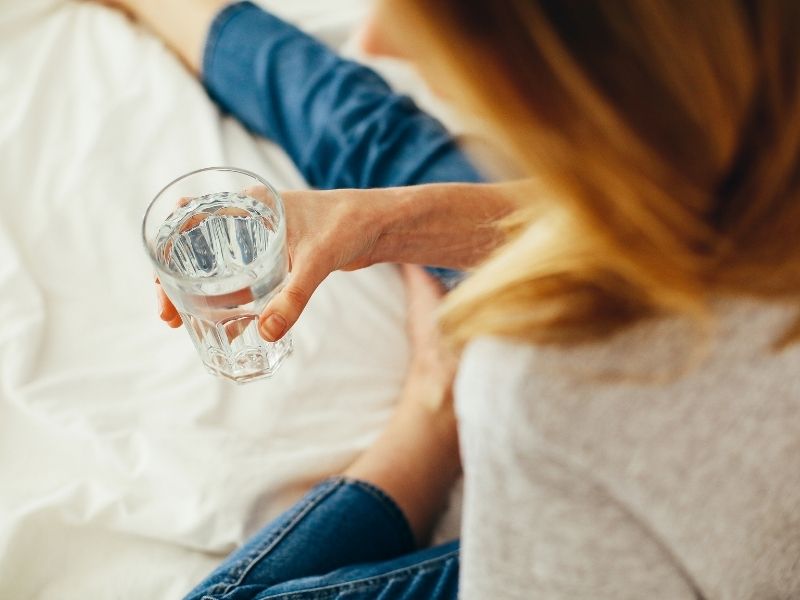We’ve all heard it so much it’s practically drilled into our heads: you need to drink at least 8 glasses of water a day, and probably a lot more, if you want to be optimally healthy. But what about if you have bladder incontinence?
If you have bladder incontinence, you need to balance your water consumption with your other health goals and lifestyle. There are steps you can take to help ensure you can still drink enough water without overwhelming your bladder.
It may be tempting to stop drinking altogether, but this can cause other health issues and won’t necessarily prevent leakage. Let’s explore.
Water & Incontinence
It is very important to stay hydrated, even if you experience urine leakage. In fact, when you are dehydrated, you can experience a buildup of body waste in your urine which can actually irritate your bladder, increasing your urge and need to go. 1
So, cutting back too much on water can have the exact opposite effect you want. But that also doesn’t mean you need to guzzle drink after drink. First, remember that you don’t want to drink all your water in one sitting. Instead, you want to have smaller amounts of water and liquid throughout the day. Sip slowly, as drinking too much too soon can overwhelm your bladder.
If you struggle with nighttime incontinence, it’s usually best to get most of your drinking done in the morning and afternoon. And note that alcohol and caffeinated beverages can make you have to pee more frequently.
So how much should you drink if you struggle with incontinence? That depends on your body and your activity level. The goal is to stay hydrated throughout the day. If your urine is a lighter or clear color, you’re good to go. If it’s darker yellow, you probably need to up your water intake – just do it slowly and see how it affects you.
And ultimately, if you are thirsty, drink! The more you are able to tune into your body’s signals, the better. If you’re still struggling with when and how much to drink, consider keeping a bladder journal. Keeping track of when and what you eat and drink, along with any incontinence episodes, can help you get a better handle on what changes to make in your routine.
Bladder Incontinence & The Pelvic Floor
Remember that bladder incontinence is a very common pelvic floor disorder, that results when the muscles of the pelvic floor weaken and are no longer able to support proper urine elimination.
So beyond managing your water intake, another way to help manage bladder incontinence is to strengthen the muscles of the pelvic floor. Kegels are a simple yet powerful exercise that you can do anywhere. They involve contracting and relaxing the pelvic floor muscles in a cycle. Learn exactly how to perform Kegel exercises here.
The good news for anyone dealing with a bladder control issue is that Kegels can really help. In fact, women with incontinence may see less urine leakage within 12 weeks of starting, as long as they stick with their routine. 2
The INNOVO Urinary Incontinence Kit is one way to end problem leaks. Using Multipath Technology, your pelvic floor is engaged and strengthened, allowing you to perform 180 precise Kegels per session without side effects. Think of it as the perfect Kegel exerciser, allowing you to properly train your pelvic floor. Subscribe to the INNOVO newsletter to receive a $20 discount code for your purchase!
Finally, remember that you don’t have to suffer in silence. A pelvic floor specialist can help you treat and manage your urinary incontinence. Use our Physician Finder to find one near you.




















